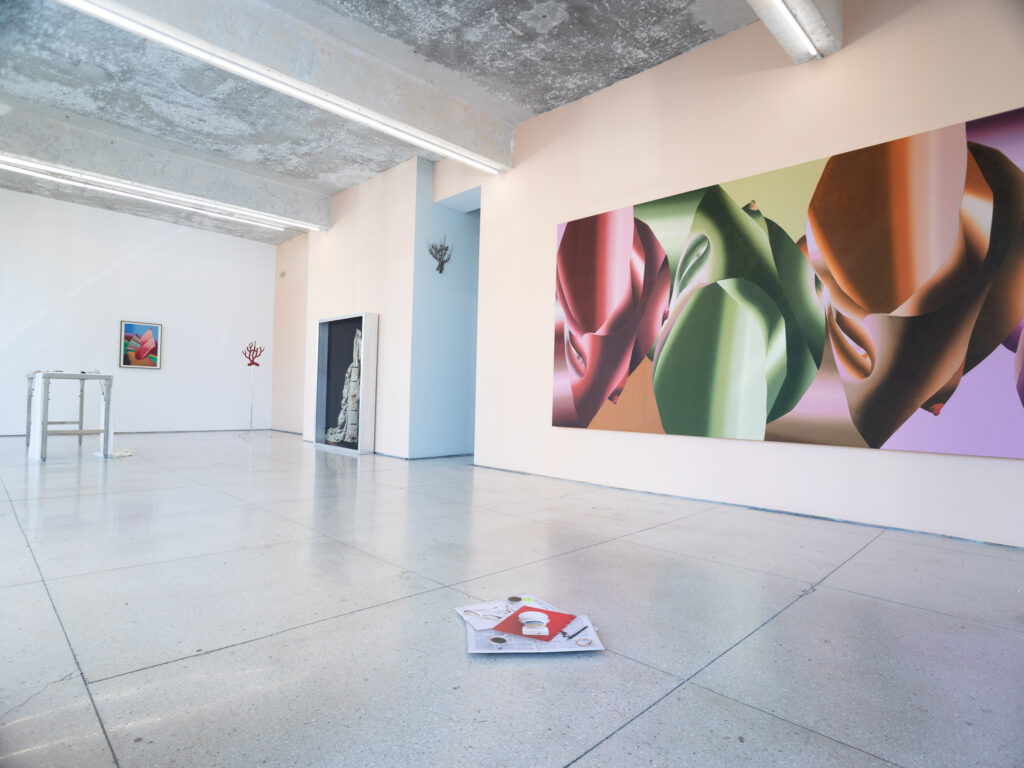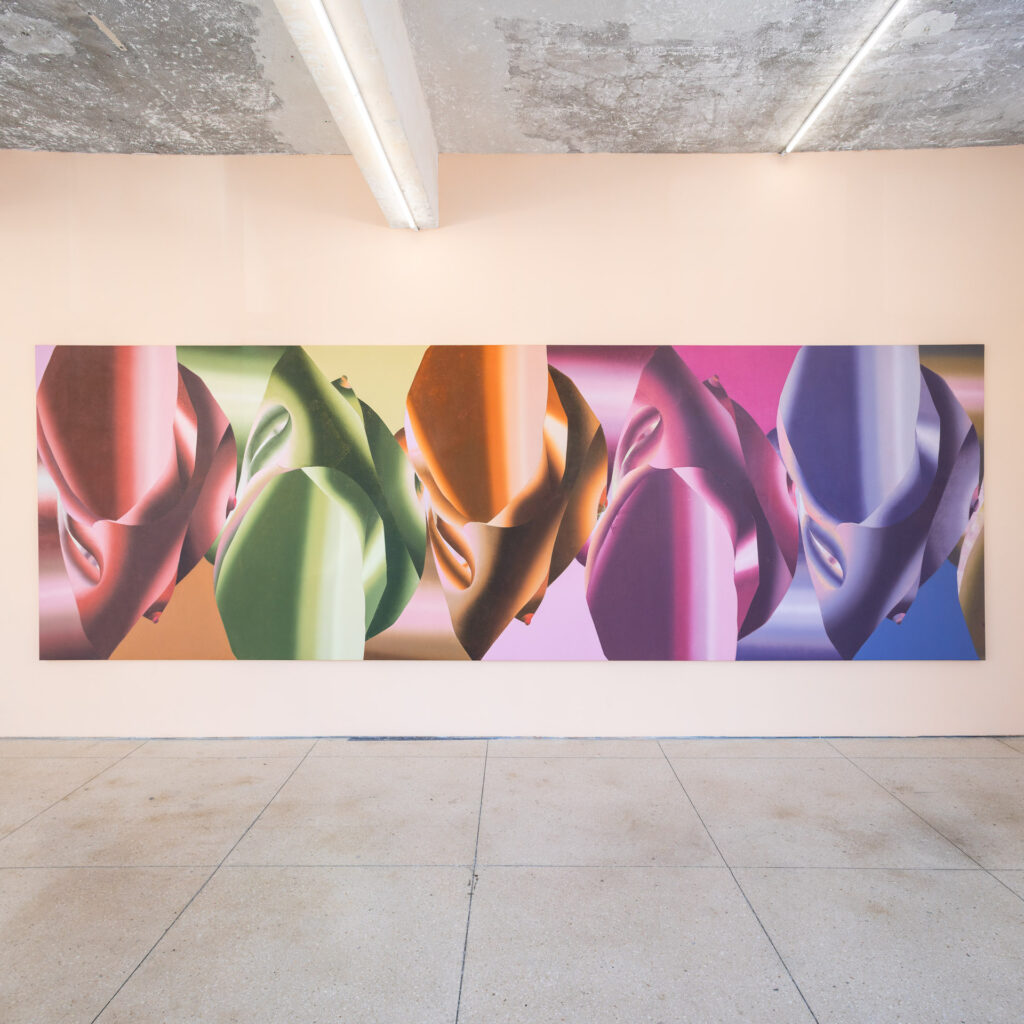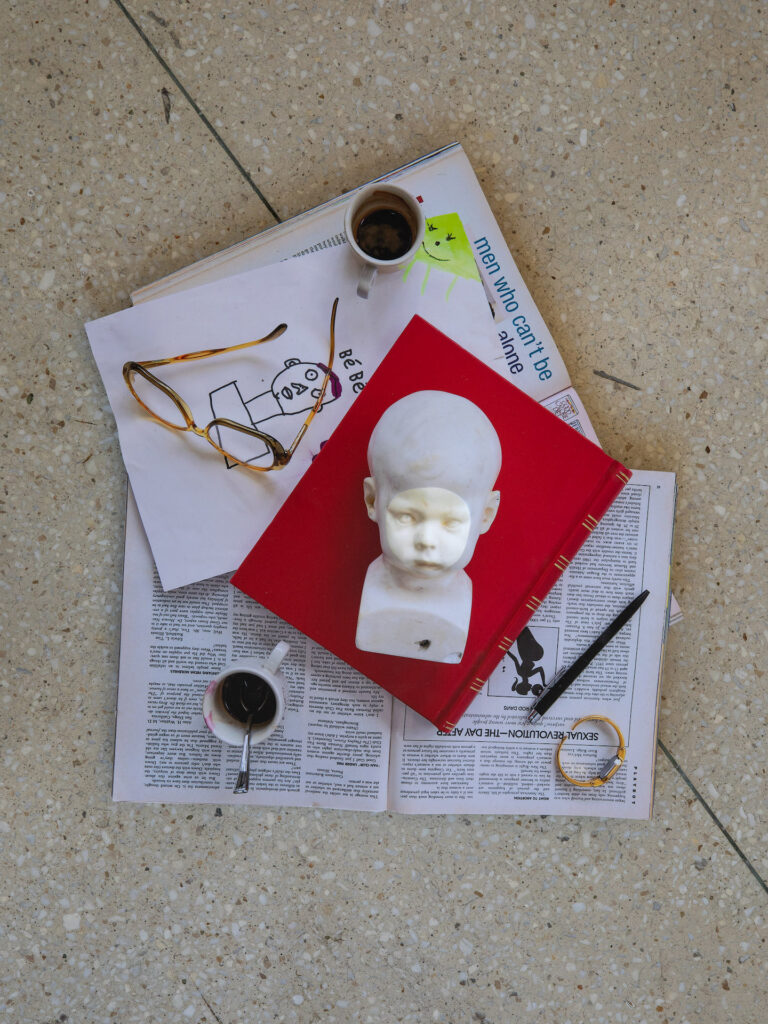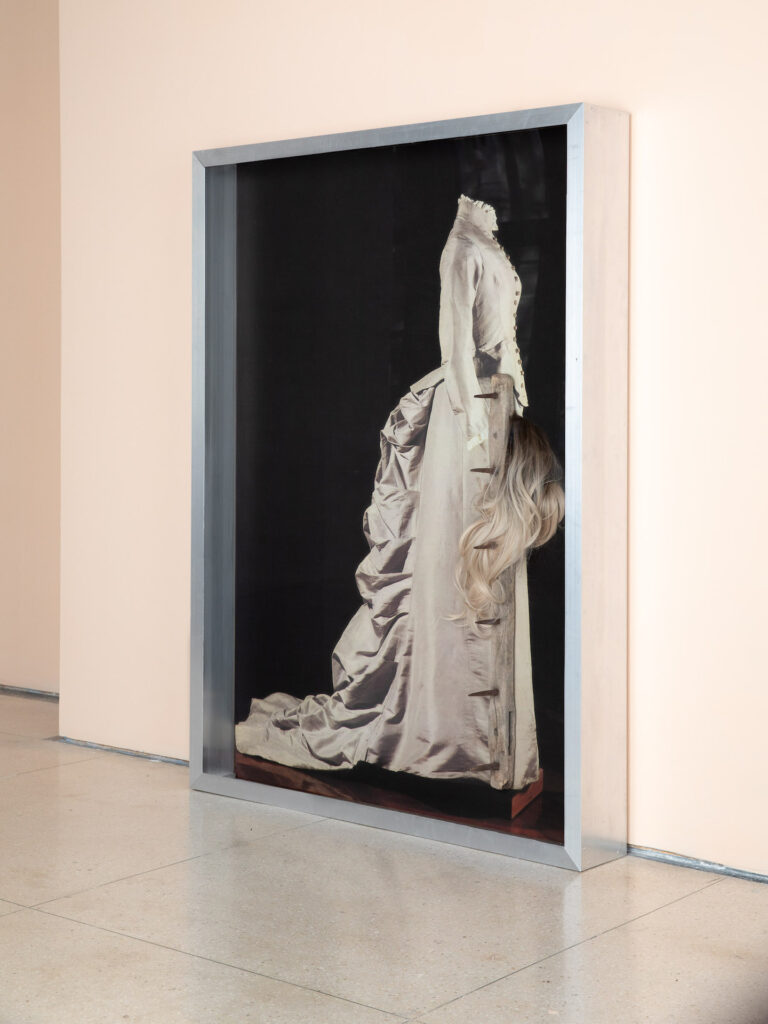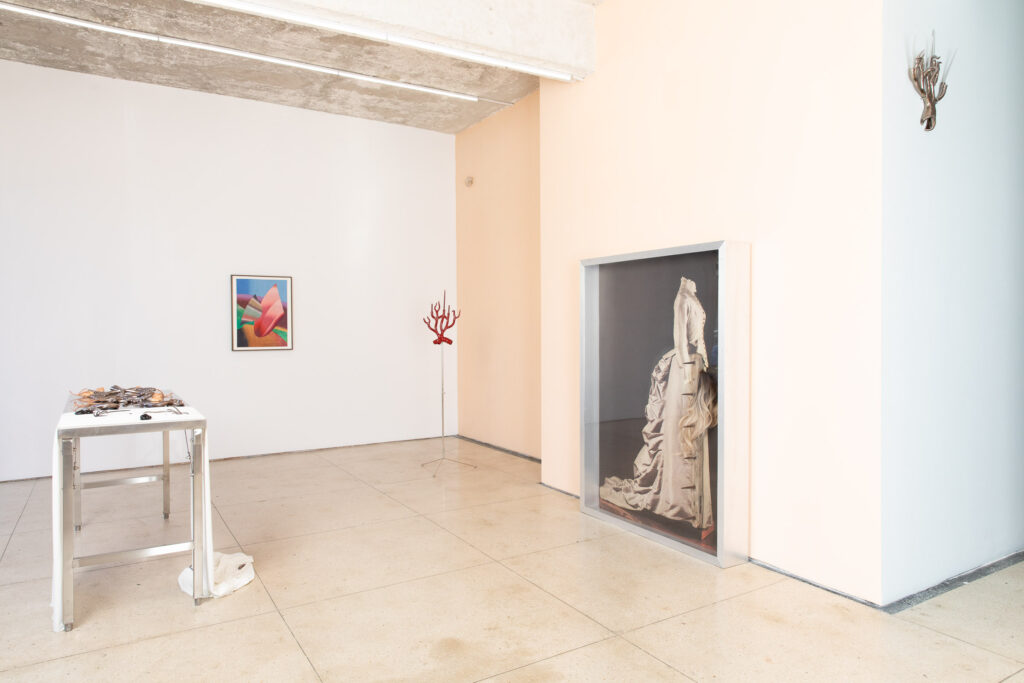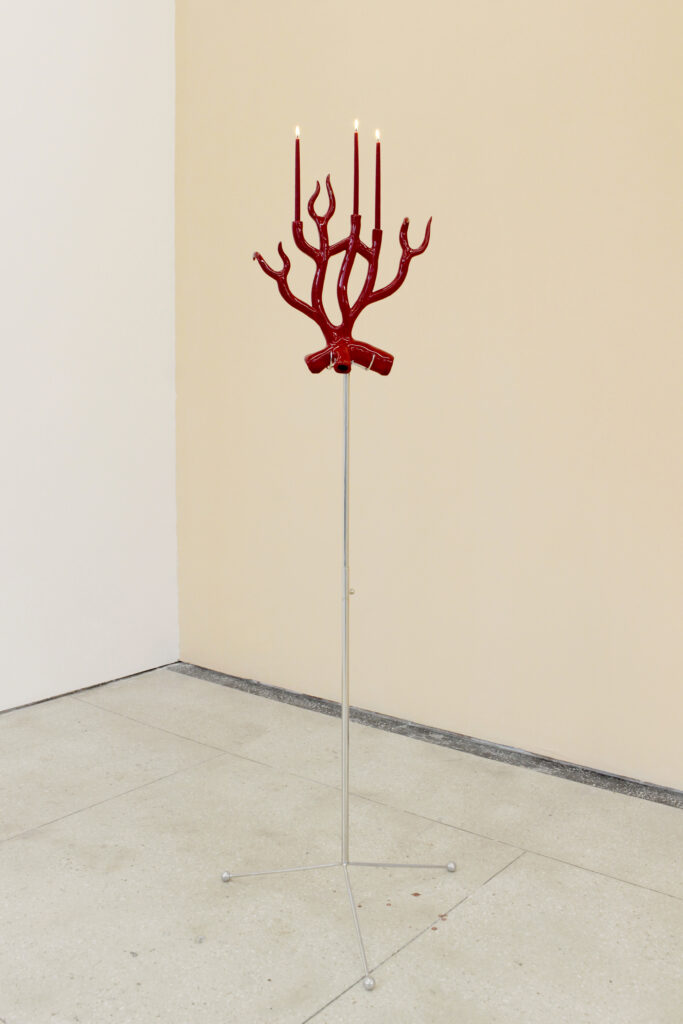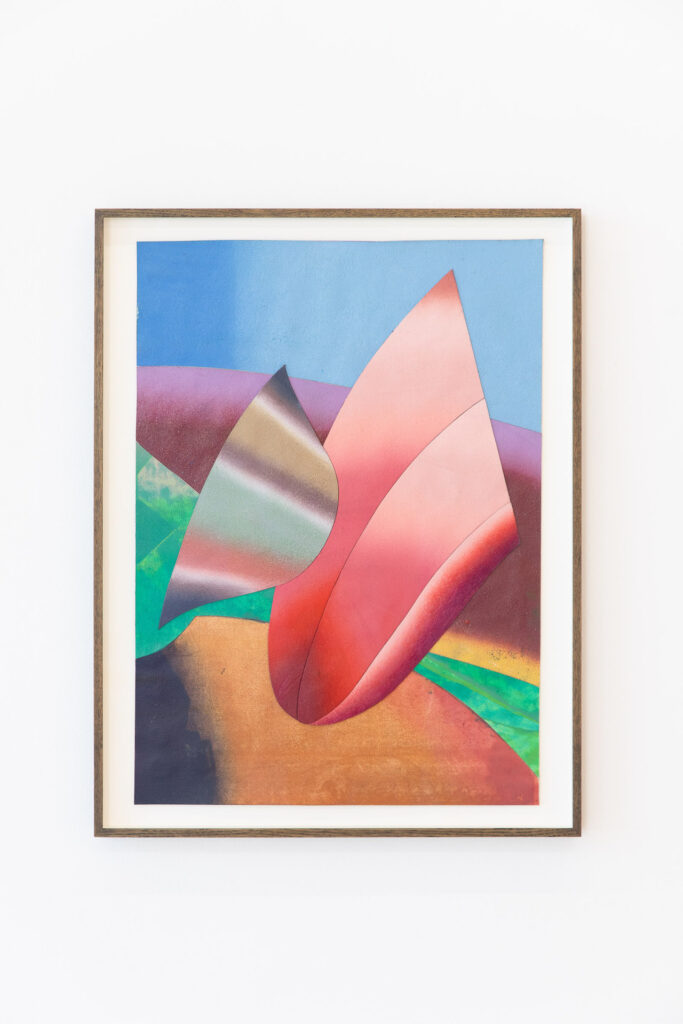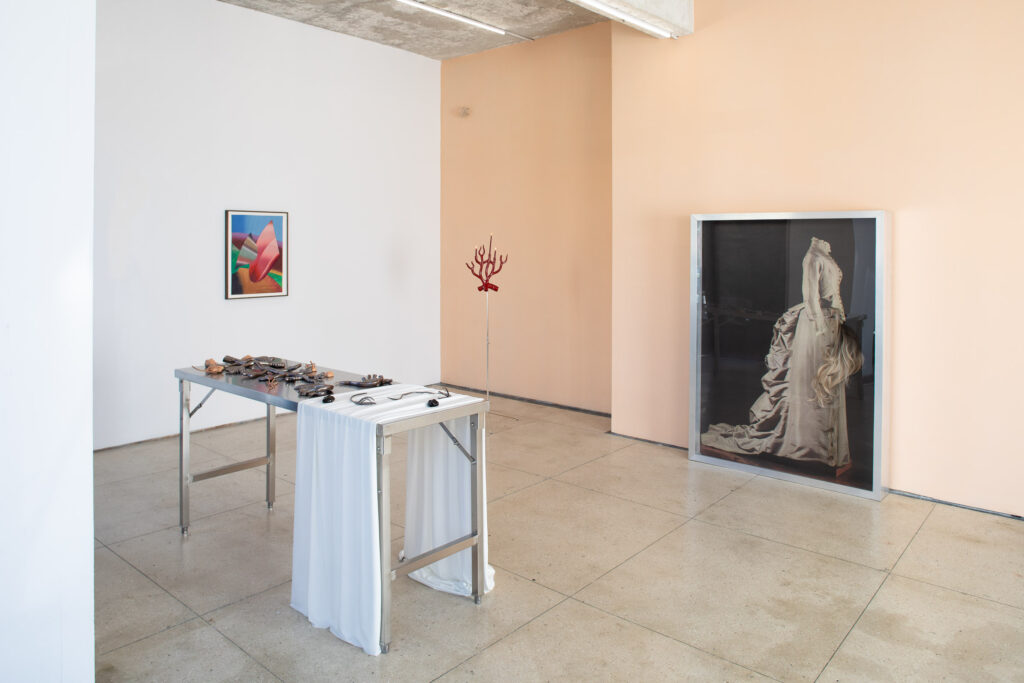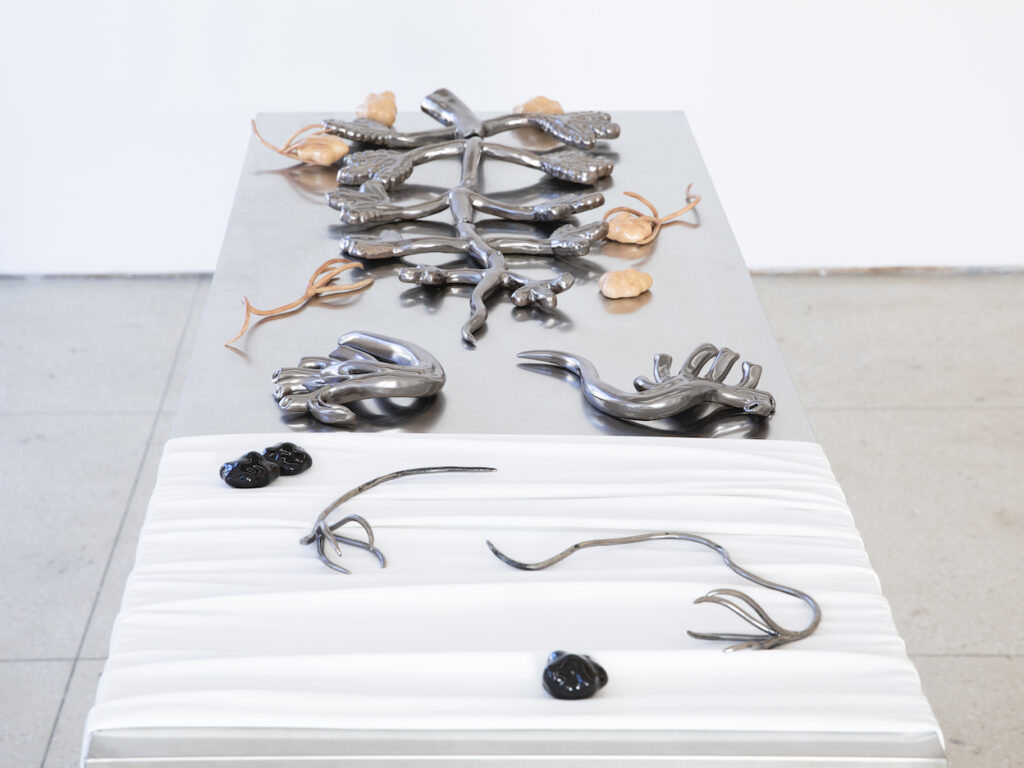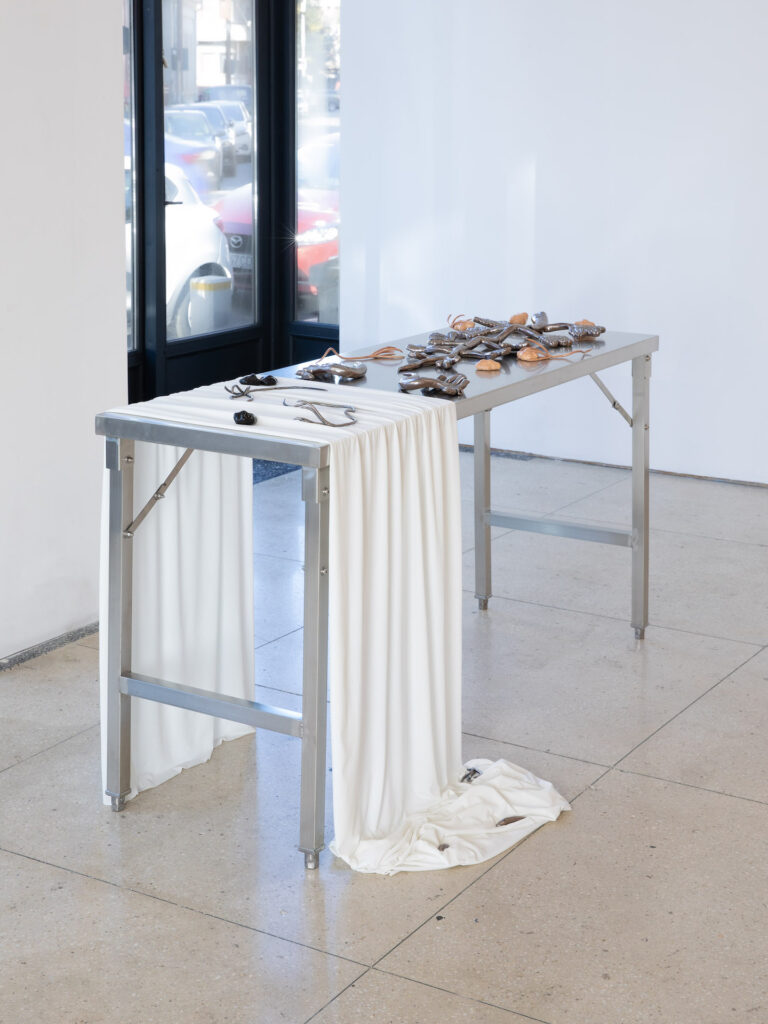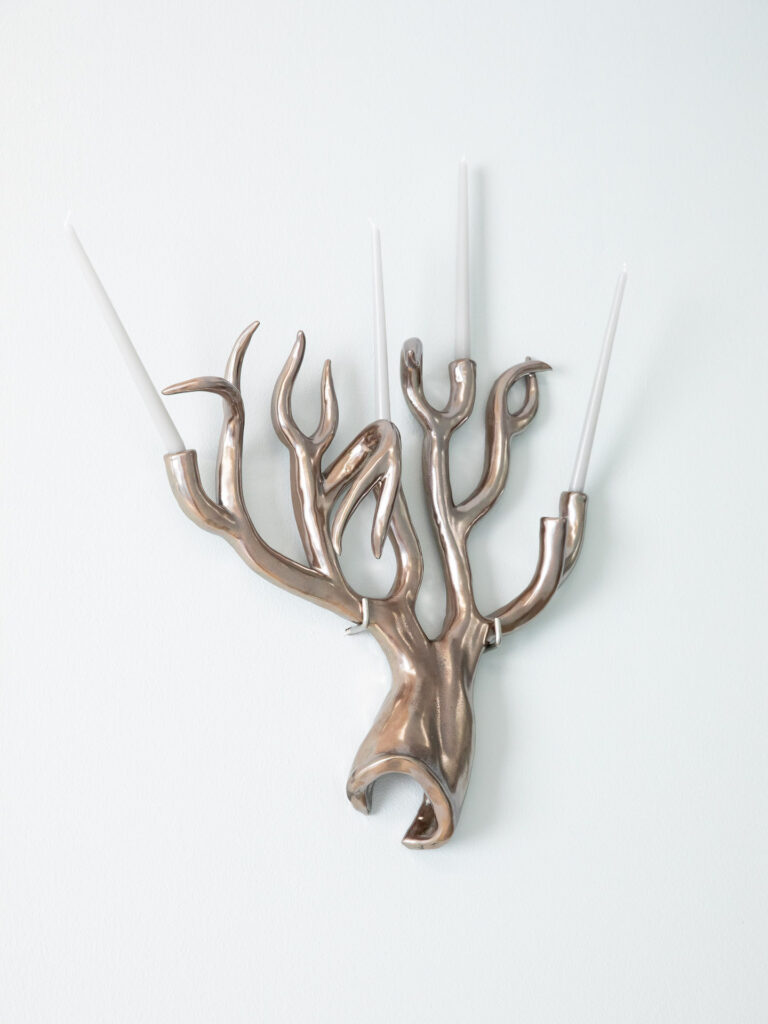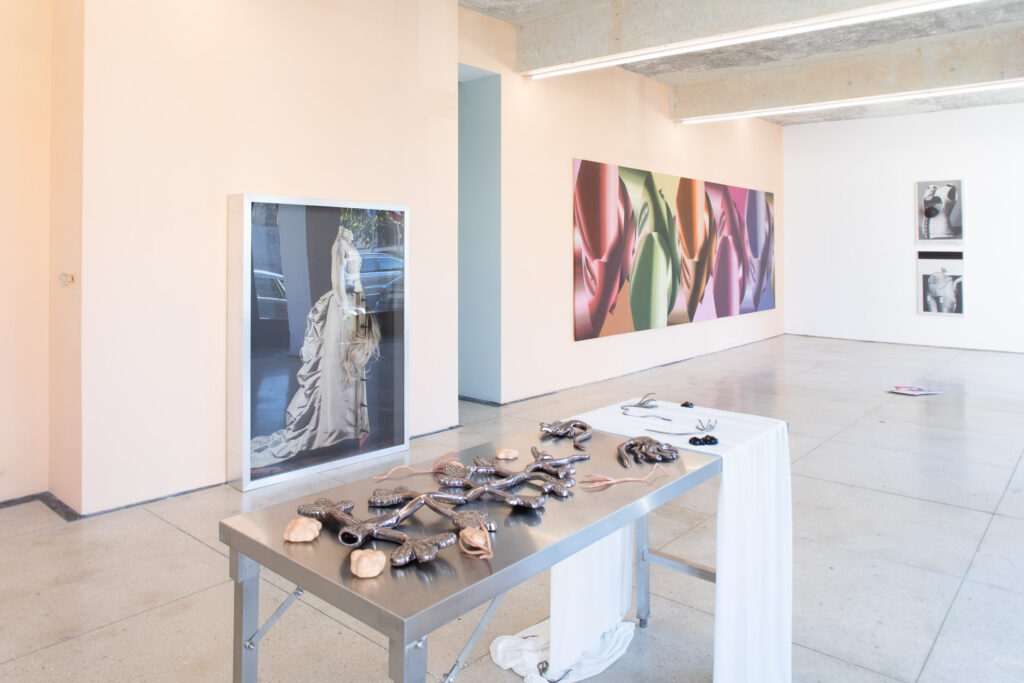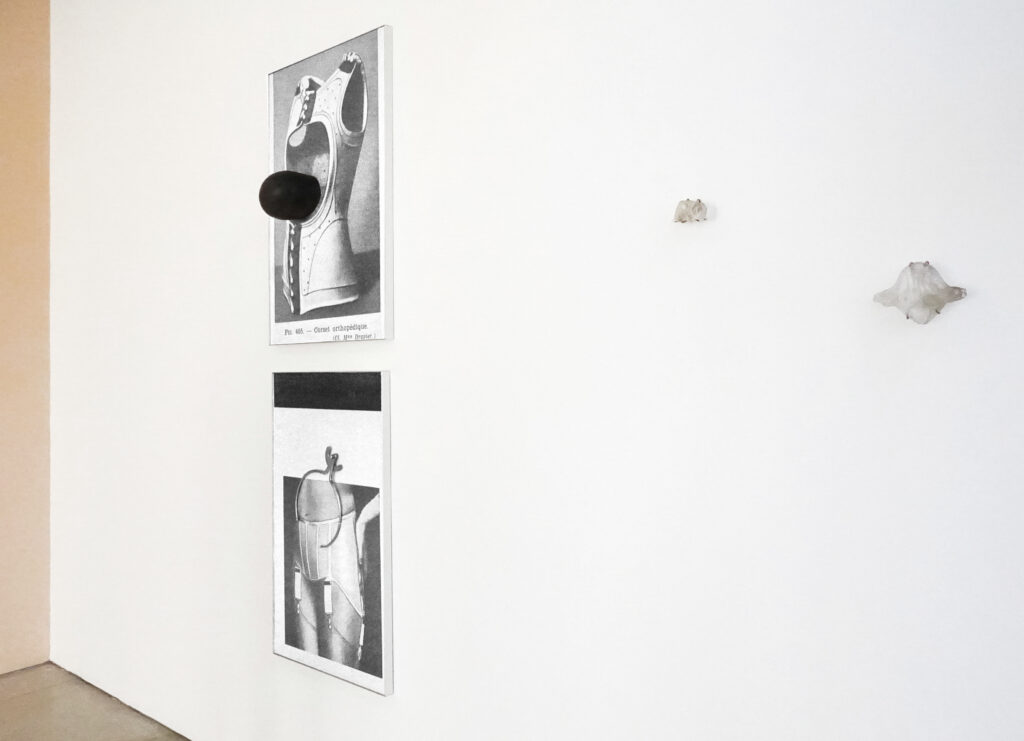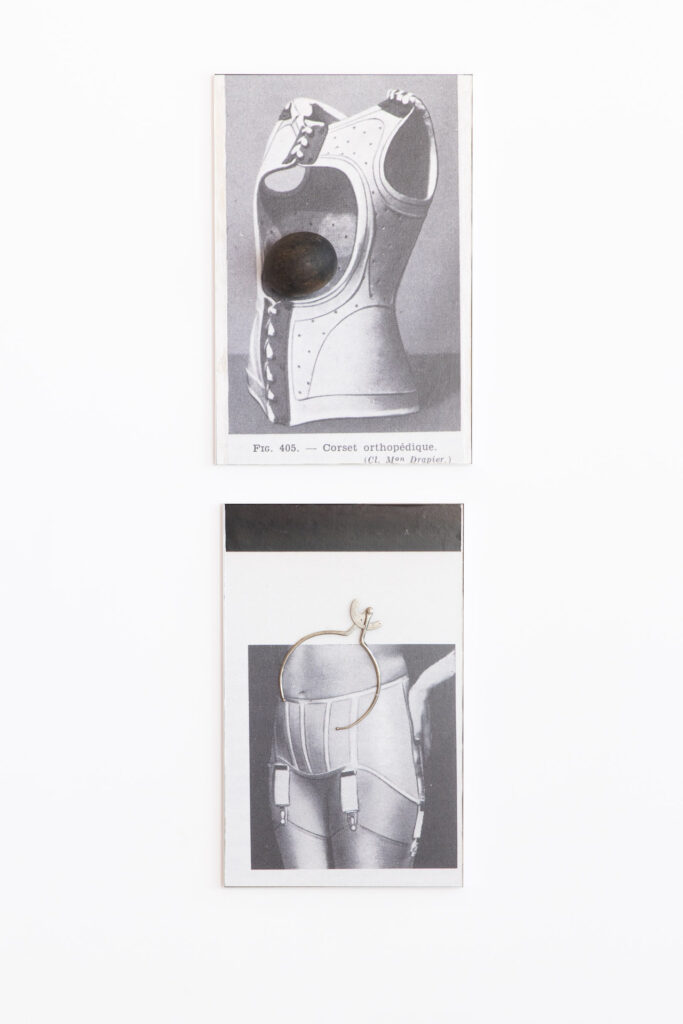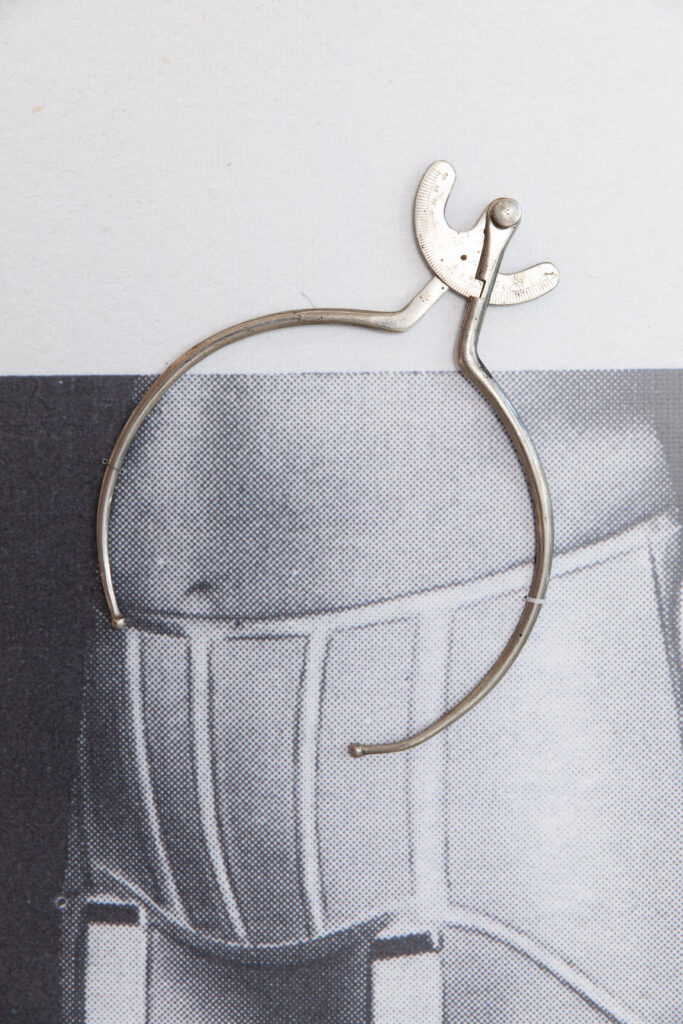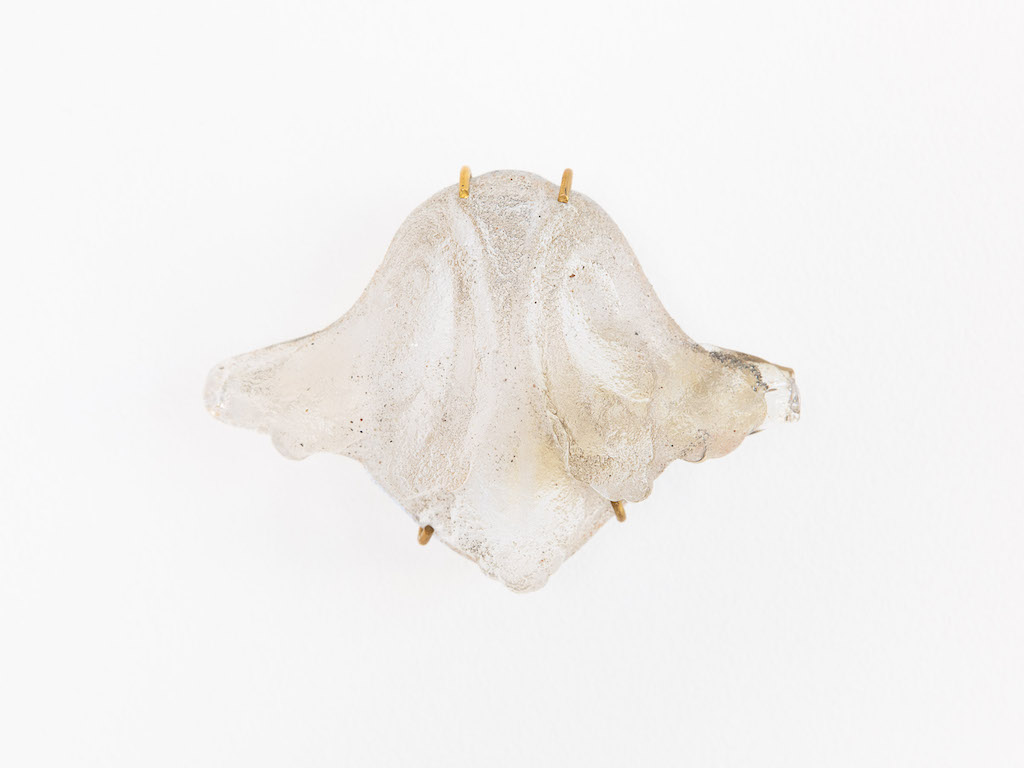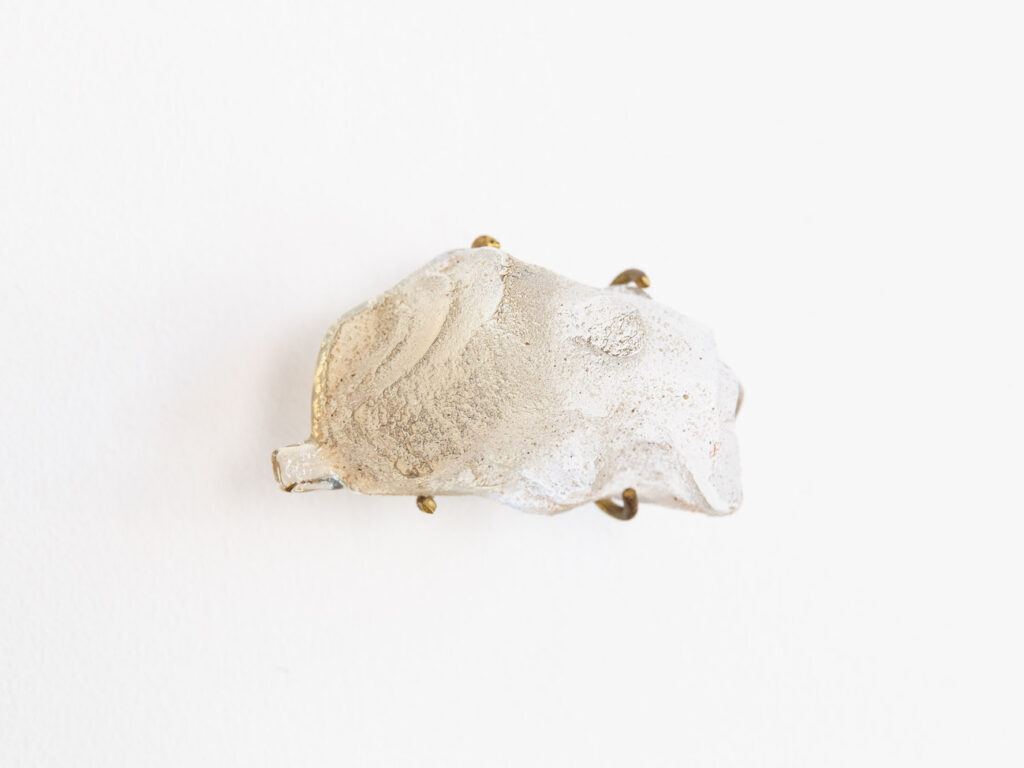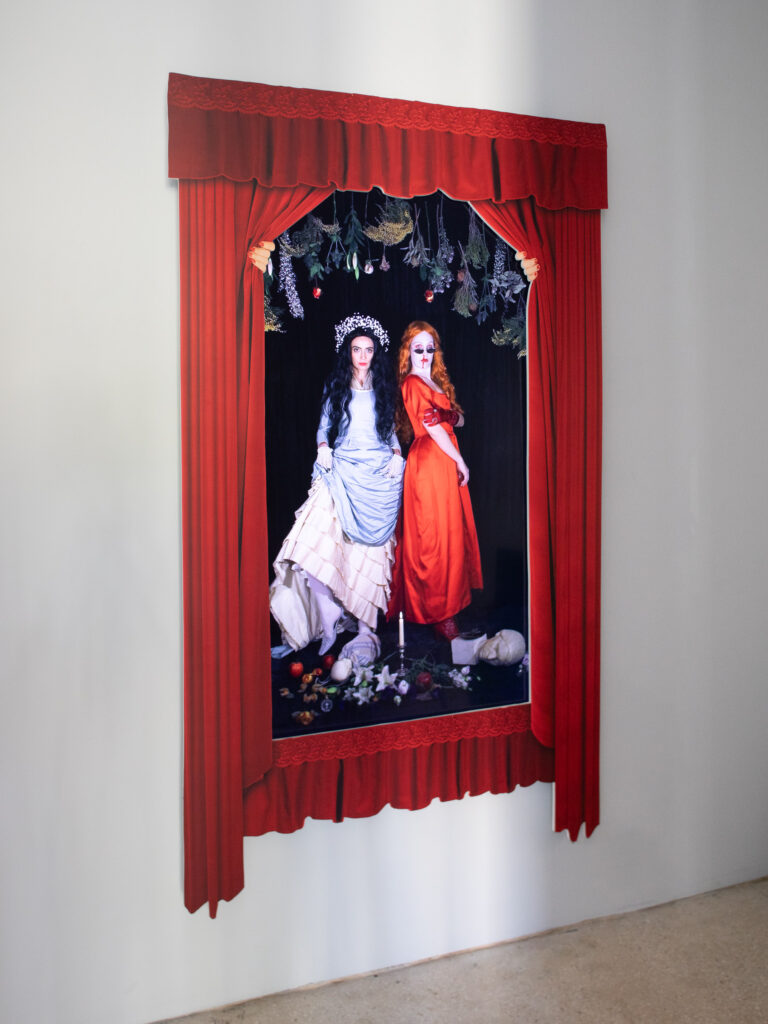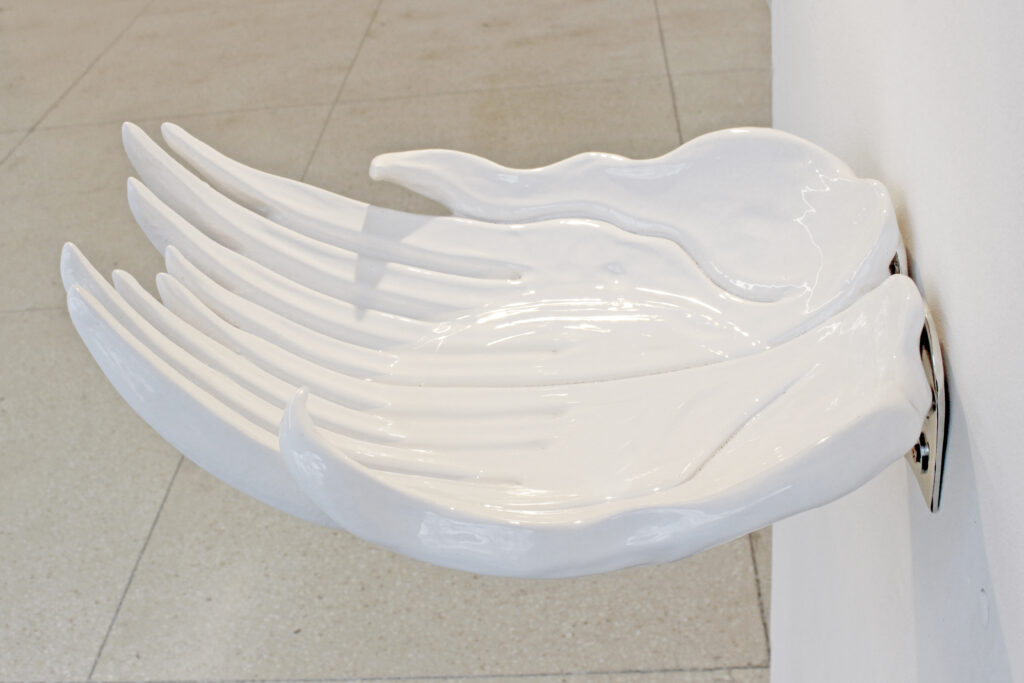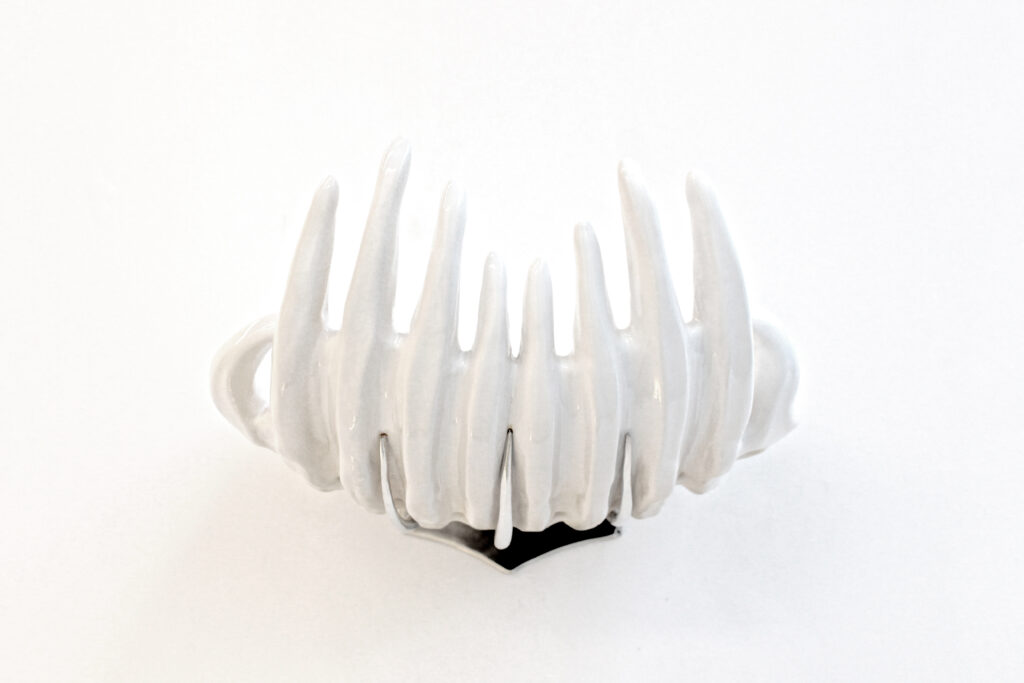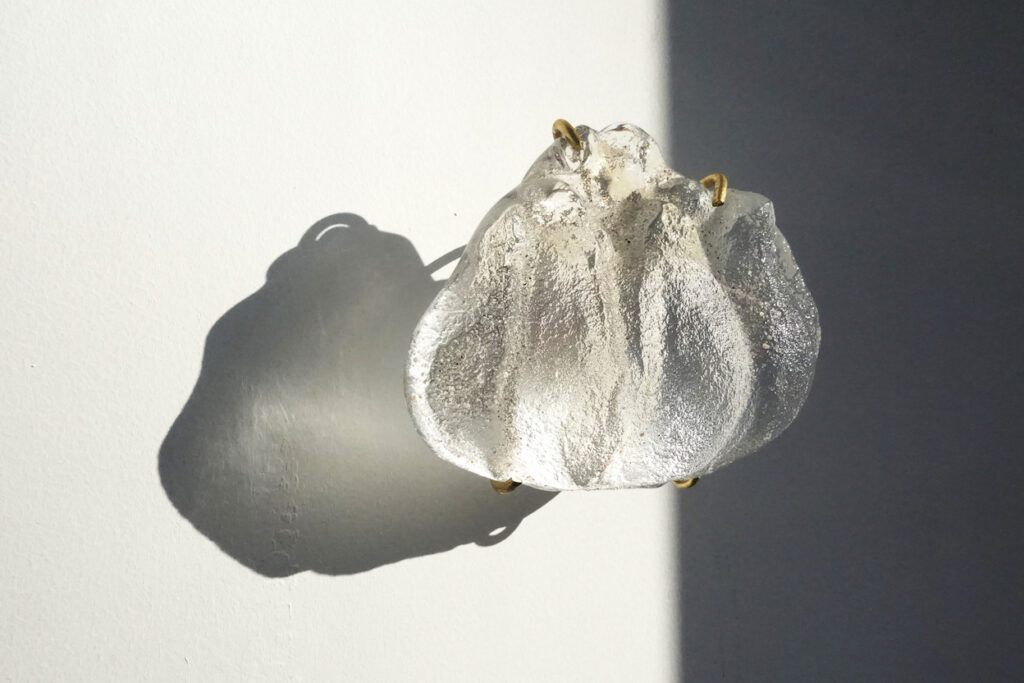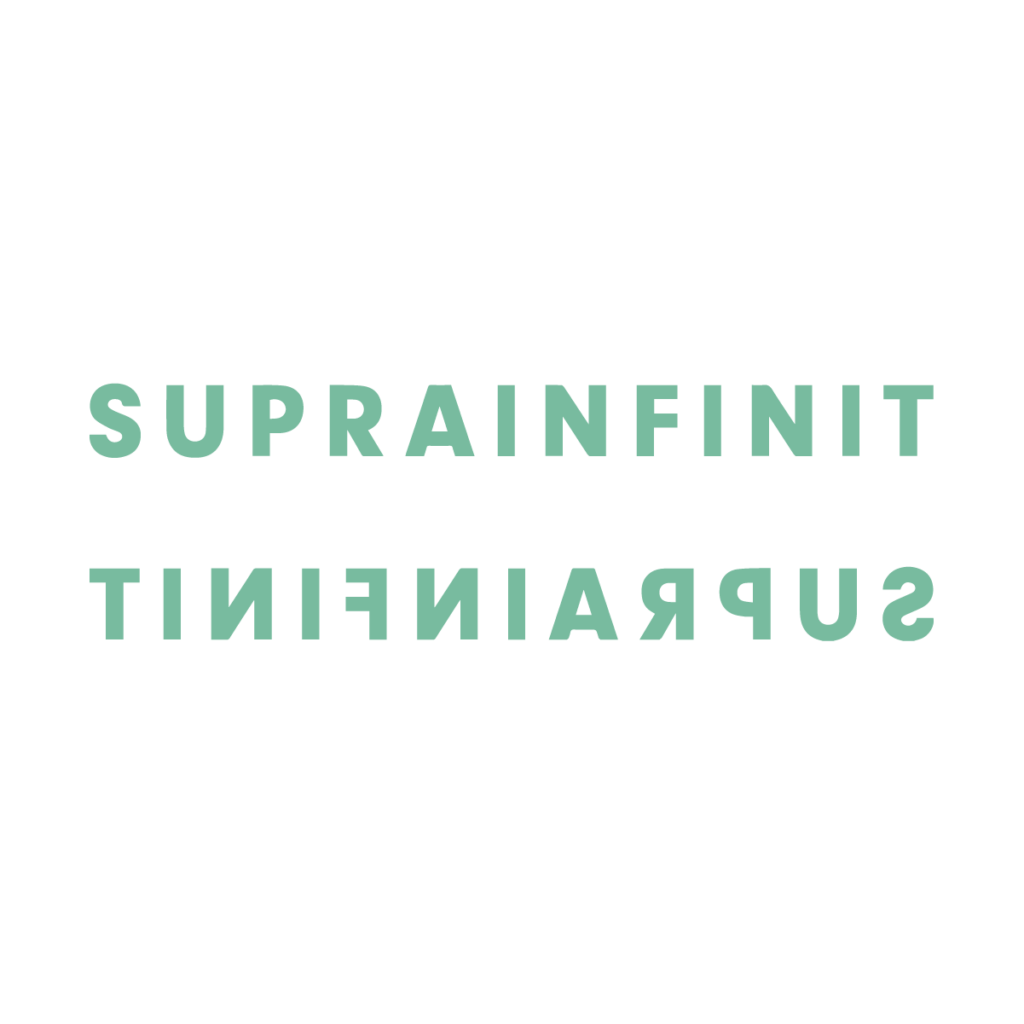23.11.2023 – 02.03.2024
Andreea Anghel, Lorena Cocioni, Hadassah Emmerich, MariaGuță & Lauren Huret, Kristin Wenzel
We are all women born, and the mother’s body as the threshold of existence is both sacred and soiled, holy and hellish – Rosi Braidotti, “Mothers, Monsters, And Machines”, 1994, p. 81
You walk inside the body of the exhibition and you hear:
I, as her fictional baby, shall forever remain confined to the canvas of her thoughts.
I am alive, but only in her head
I am the embodiment of possibilities
I am her hallucination, a vision of her future death…
An atmosphere of a ghostly guise presses in. It takes a moment to understand that the “baby”, as called by Maria Guta & Lauren Huret, is an abstract concept that would never materialise in the reality as known. A slightly alienated presence oozes away from the motherly touch but never really stops speaking, remaining that fictional creation that transcends the boundaries of flesh and blood.
Skin of the Shapeshifter assembles multiple perspectives on womanhood and the body, as well as different materialities, spotlighting five female contemporary artists whose artworks tackle this topic polyphonically. The body, whether individual or social, human or nonhuman, emerges as constantly mutating, its many transformations producing fascination.
The exhibition weaves together narrative or sub-narrative sequences, wandering from one work to the other as if in a fairytale realm that sometimes drifts to hyperreal grounds. A female narrator whispers into the ears of the visitor disclosing her new idea of beauty, fascination with monstrosity, and her dissecting parable of the medicalised female body. This claim of the personal over the voyeuristic, of the interior over the exterior, of the posthuman over the holy, is made visible by the display of the artworks, and the connections amongst them.
Immersed in Hadassah Emmerich’s landscape of a posthuman sensuality, the large-scale canvas bears a beacon calling out for tactile closeness. Almost to the point of an addictive hallucination, Emmerich achieves this state by employing repetitive moves, stringent colours and subtle body fragments, harmonised into disturbing and alluring compositions. The commodification of the exotic and the erotic, body and identity are recurring subjects in her work. By interrogating both her mixed Indian-Dutch, Chinese-German cultural heritage and the contemporary erotic image, her works are a dazzling visual experience that create the sensation of ambiguity and rupture.
Disruption in the image production and perception is a feature in Andreea Anghel’s practice. Artefacts and images of early and late modernity circulate non-chronologically inside her works, mostly selected instinctively, under the influence of a gut feeling and collective psychic discomfort. In Matriarchy and Patriarchy, she subverts the historical meaning of the images through the placement of distressing objects in key segments. Signifiers of a modern understanding of body prosthetics or medical treatments for a body meant to be perfect rather than monstrous, are inferred and subtly criticised by the artist. The gynaecological gaze is further probed in Lorena Cocioni’s installation They Rear Like Snakes And Breathe Like Fish. On a stainless steel table, a constellation of female hormonal glands are metaphorically unravelled. Lorena is fascinated by the anatomical images of the female body, and triggered by Julia Kristeva’s idea that bodily fluids and emissions–such as menstrual blood, hormonal glands and breast milk–stand assymptoms of the abject.
In a strange correspondence, Cocioni’s clay and metal structures seem to have travelled inside the bodies captured by photographer Nan Goldin’s complex, dimly sexualised atmospheres. Whereas Goldin’s photographs seize the feelings of difficult beauty, anxiety, and intimacy within differing social dynamics, Cocioni’s works metamorphose the fluids, liquids and organs of the bodies that are constructed as abject by those very dynamics.
Slowly burning down throughout the exhibition, the bundle of red candles as blood vessels sweat out the running fluids of our bodies.
Andreea Anghel’s assemblage of Catherine-The-Not-So-Great disrupts the linearity of history and preexistent images. On an emotionless and emptied background, the representation of a dress worn by the Russian elite in the 1780s is punitively attached to a blond wig and an antique agrarian tool. Wrestling inside the aluminium case, the image of a headless figure of the Russian colonial violence is now impaled by one of the working tools of repressed agrarian peasants. At the other side of the spectrum, Maria Guță & Lauren Huret’s video work She Makes A Very Beautiful Corpse, Sir unleashes a feminist perspective on the bloodsucking, male aristocrat monster, displacing the symbolic voice of Dracula and the fetishization of the subaltern body.
Coagulated in the exhibition as jellyfish and shapes of ornaments and body parts, Kristin Wenzel’s transparent glass works infiltrate as bodies of water that seduce the other works around them. Ideas of transcendence of human or nonhuman bodies are tackled in Kristin Wenzel’s works. Historically, architectural ornamentation, as well as other forms of artistic excess, have been associated with the feminine, the queer, and the monstrous. Split off at their creation, hovering around as creatures of the sea.
This project is financed with the support of EEA Grants 2014-2021 within the RO-CULTURE Program.
The installation by Swiss-based artists Maria Guță & Lauren Huret is supported by Swiss Sponsors’ Fund, a common project of the Swiss Embassy and the Swiss-Romanian Chamber of Commerce.
